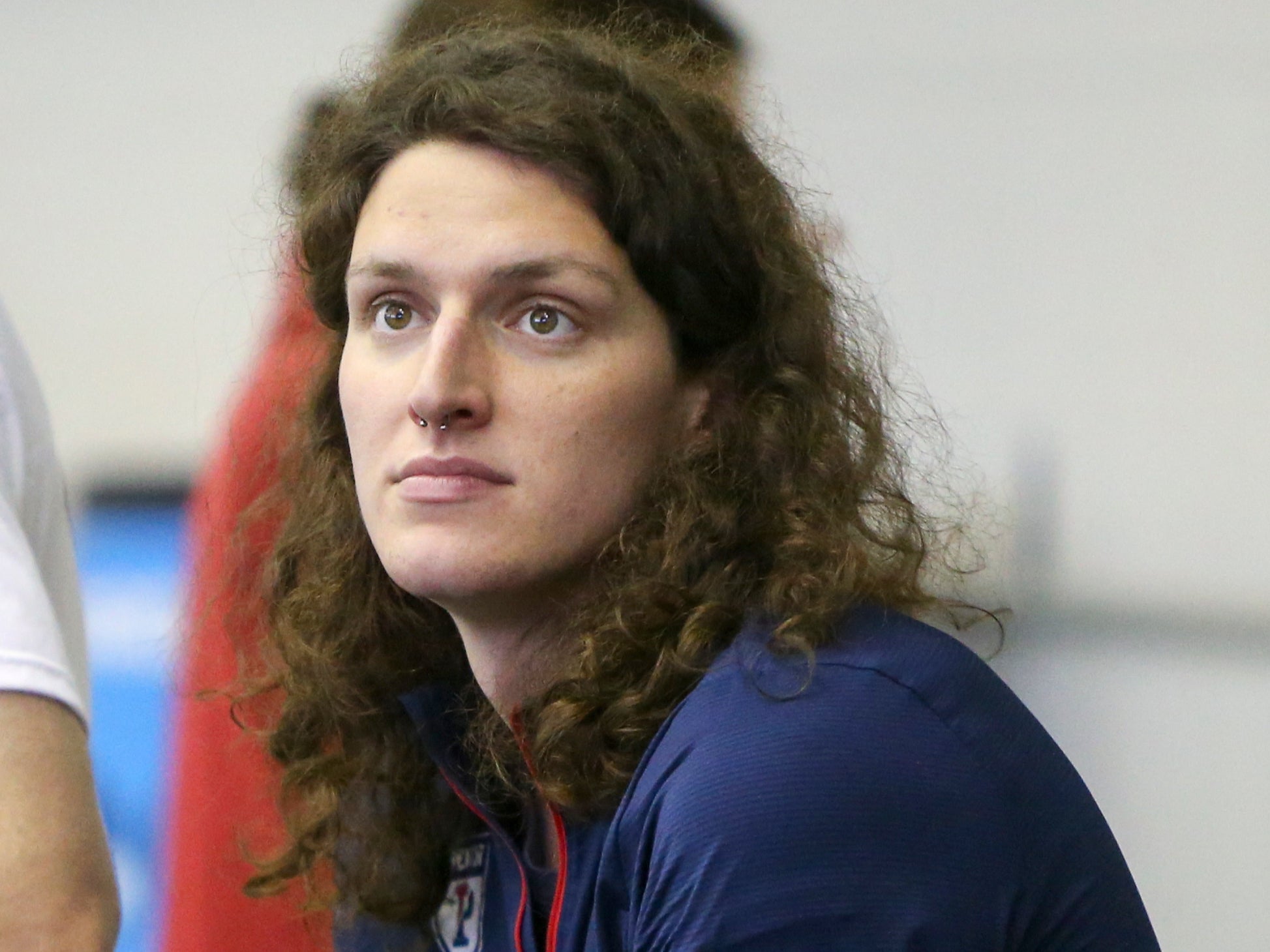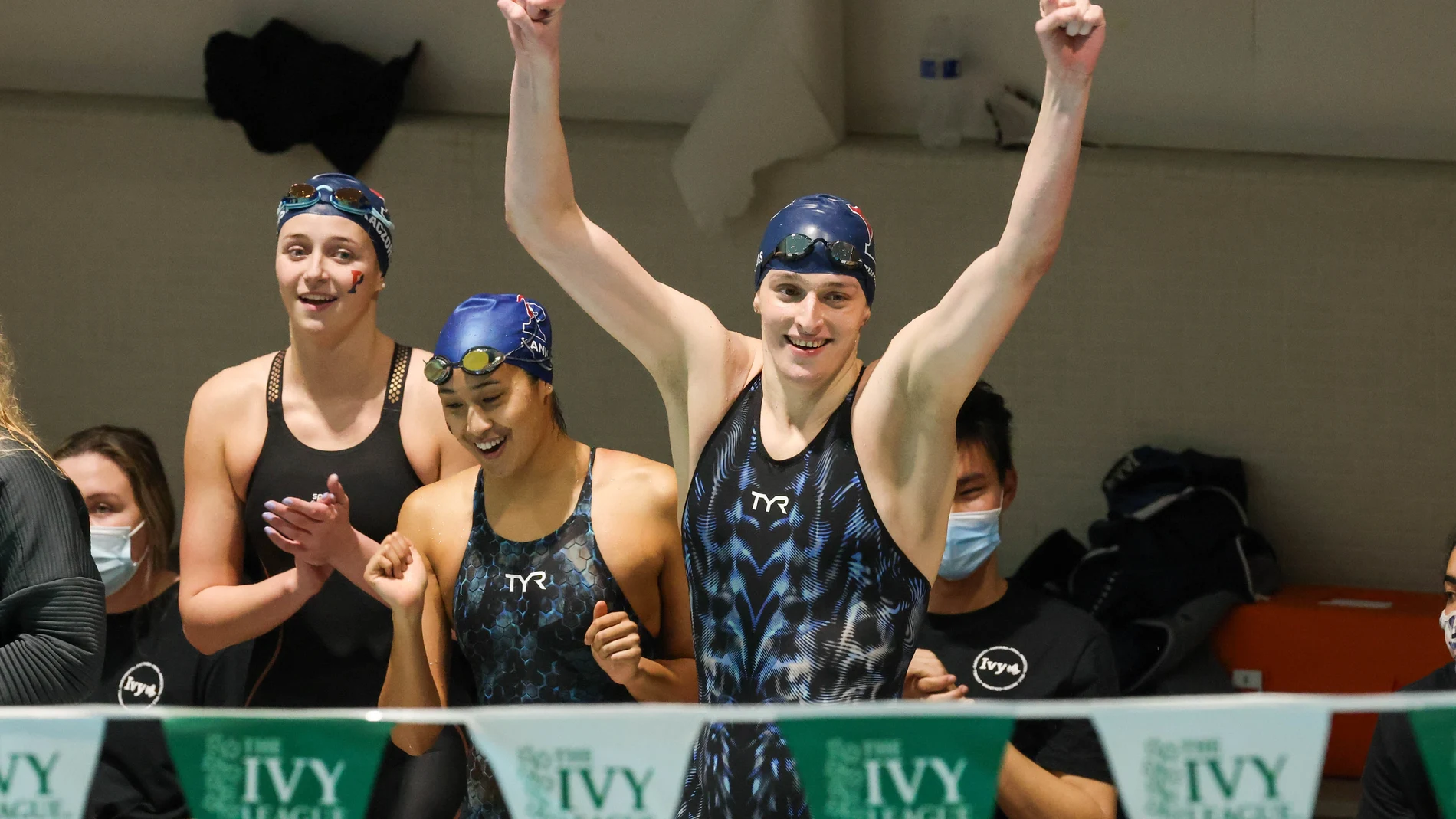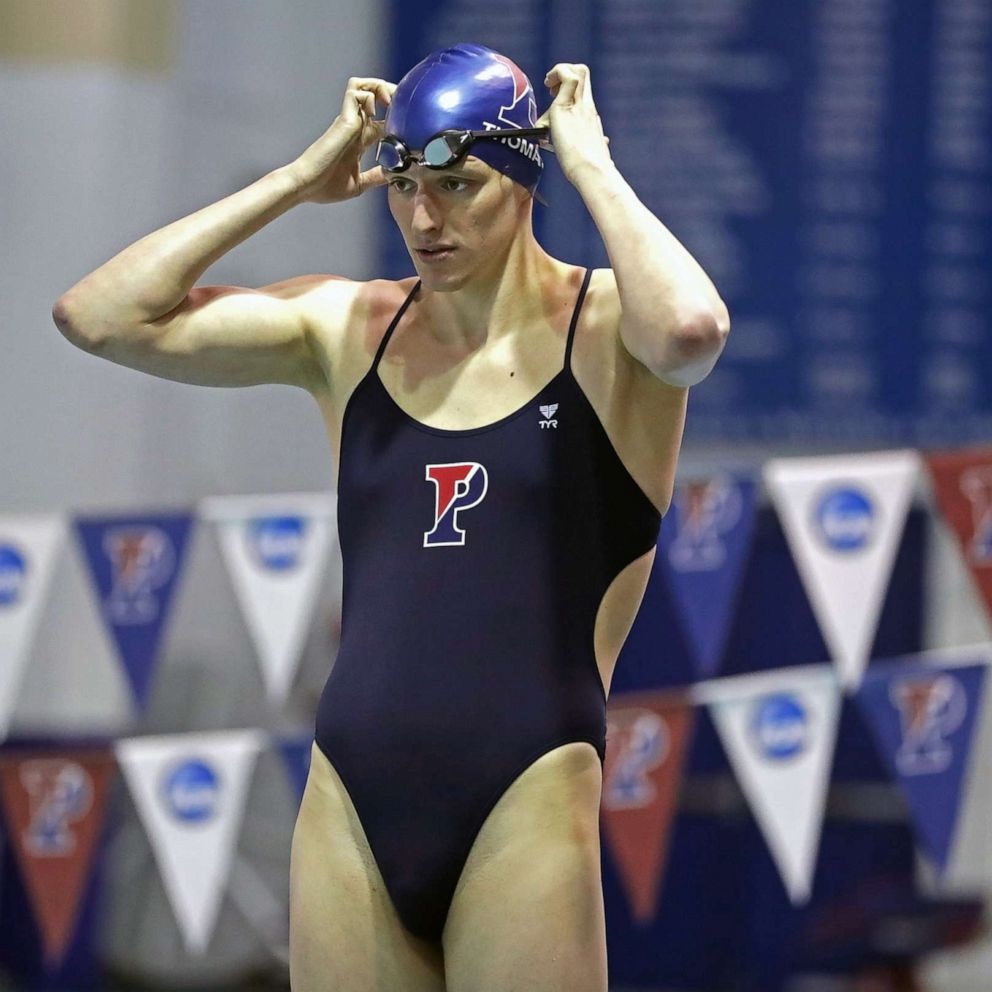Lia Thomas Before Hormone Therapy: Exploring The Crossroads Of Identity, Sports, And Inclusion
Lia Thomas before hormone therapy is a noun phrase referring to Lia Thomas, a transgender woman who competed in NCAA swimming before undergoing hormone therapy.
The topic is significant because it highlights issues of transgender rights and inclusion in sports. By discussing Lia Thomas before hormone therapy, we examine complex social and ethical questions surrounding gender identity and athletic competition. Historically, similar debates have occurred regarding other transgender athletes, such as Caster Semenya.
This article will explore the experiences, controversies, and broader implications surrounding Lia Thomas before hormone therapy, providing an in-depth look at this multifaceted issue.
Read also:Sophia Di Martino Nude The Truth Behind The Clickbait And Sensationalism
Lia Thomas Before Hormone Therapy She Almost
Lia Thomas before hormone therapy is a complex topic that encompasses several essential aspects, including:
- Identity: Lia Thomas's gender identity as a transgender woman
- Athletics: Lia Thomas's swimming career and achievements
- NCAA: The NCAA's policies on transgender athlete participation
- Hormone therapy: The role of hormone therapy in transgender transitions
- Inclusion: The issue of transgender inclusion in sports
- Controversy: The debates and controversies surrounding Lia Thomas's participation
- Fairness: Questions about the fairness of transgender athletes competing in women's sports
- Science: The scientific evidence on transgender athletes' physical advantages
These aspects are interconnected and have been the subject of intense debate. By exploring them, we gain a deeper understanding of the complex issues surrounding Lia Thomas before hormone therapy.
| Name | Birth Date | Birth Place | Sport |
|---|---|---|---|
| Lia Thomas | June 20, 1998 | Austin, Texas | Swimming |
Identity
Lia Thomas's gender identity is a central aspect of her experience before hormone therapy, shaping her journey as a swimmer and the subsequent discussions about her participation in women's sports. It encompasses several key facets:
- Self-Identification
Lia Thomas identifies as a transgender woman, meaning that her gender identity does not align with the sex she was assigned at birth. - Transition
Thomas is in the process of transitioning from male to female, which involves social, medical, and legal steps. - Discrimination
Transgender individuals often face discrimination and prejudice, which can impact their mental and physical well-being. - Advocacy
Thomas has used her platform to advocate for transgender rights and inclusion, speaking out against discrimination and advocating for understanding.
These facets highlight the complex and multifaceted nature of Lia Thomas's gender identity, which has been a source of both celebration and controversy in the context of her swimming career.
Athletics
Lia Thomas's swimming career and achievements are a significant aspect of her experience before hormone therapy and contribute to the broader context of her participation in women's sports. Her athletic accomplishments have sparked discussions about the complexities of transgender inclusion, fairness, and identity in competitive sports.
- Competitive Success
Lia Thomas has achieved notable success in competitive swimming, breaking records and winning championships at the collegiate level. - Physical Advantages
Thomas's physical attributes, including height and lung capacity, have been the subject of debate in relation to the advantages transgender athletes may have in women's sports. - NCAA Eligibility
Thomas's eligibility to compete in women's swimming under NCAA rules has been a point of controversy, raising questions about the organization's policies and the inclusion of transgender athletes. - Fairness in Competition
The question of fairness in competition arises when transgender athletes participate in women's sports, with some arguing that their physical advantages may compromise the integrity of the competition.
These facets of Lia Thomas's swimming career and achievements highlight the complex interplay between athletics, identity, and the ongoing discussions surrounding transgender participation in sports. They provide a foundation for understanding the challenges and opportunities that arise in the context of "Lia Thomas Before Hormone Therapy She Almost."
Read also:Will Smith Nude The Untold Story Behind The Controversy And Its Impact
NCAA
The NCAA, or National Collegiate Athletic Association, is the governing body for college sports in the United States. Its policies on transgender athlete participation have been at the center of the debate surrounding Lia Thomas, a transgender woman who competed in NCAA swimming before undergoing hormone therapy.
- Eligibility Requirements
The NCAA has specific eligibility requirements for transgender athletes. These requirements include undergoing hormone therapy for at least one year and having low levels of testosterone. - Inclusion and Fairness
The NCAA's policies aim to balance inclusion and fairness. The association wants to ensure that transgender athletes have the opportunity to compete, while also maintaining the integrity of women's sports. - Controversy and Debate
The NCAA's policies have been the subject of much controversy and debate. Some argue that the policies are too lenient and give transgender athletes an unfair advantage. Others argue that the policies are necessary to protect the fairness of women's sports. - Lia Thomas's Case
Lia Thomas's case has brought the NCAA's policies on transgender athlete participation into sharp focus. Thomas competed in men's swimming for three years before transitioning to the women's team. She has since broken several records and won multiple championships.
The NCAA's policies on transgender athlete participation are complex and evolving. The association is tasked with balancing inclusion and fairness, while also navigating the complex and often contentious issue of transgender rights. Lia Thomas's case has brought these issues to the forefront of public discourse, and it is likely that the NCAA's policies will continue to be debated in the years to come.
Hormone therapy
Hormone therapy plays a crucial role in the transitions of transgender individuals, including Lia Thomas, before she underwent hormone therapy. It encompasses medical treatments that alter hormone levels to align with the desired gender identity.
- Testosterone Suppression
For transgender women like Lia Thomas, hormone therapy often involves suppressing testosterone levels to reduce masculine characteristics. - Estrogen Administration
Simultaneously, estrogen is administered to develop feminine characteristics, such as breast growth and fat redistribution. - Long-Term Effects
Hormone therapy can have long-term effects on physical and mental health, contributing to overall well-being and gender congruence. - Eligibility Considerations
In the context of sports, hormone therapy may be a requirement for transgender athletes to meet eligibility criteria, as seen in Lia Thomas's case under NCAA regulations.
Lia Thomas's experience highlights the complexities of hormone therapy in transgender transitions, particularly in relation to athletic competition. Her case has sparked discussions about the role of hormone therapy in ensuring and inclusion in sports while respecting the rights and identities of transgender individuals.
Inclusion
Inclusion is a multifaceted aspect of "Lia Thomas Before Hormone Therapy She Almost" that encompasses the participation of transgender individuals in sports. It involves recognizing and respecting the rights of transgender athletes while ensuring fair competition and maintaining the integrity of sports.
- Equal Opportunities
Inclusion promotes equal opportunities for transgender athletes to participate in sports without discrimination or exclusion.
- Respect and Dignity
It recognizes the dignity and rights of transgender athletes, valuing their contributions and experiences in the sports community.
- Fairness and Competition
Inclusion aims to balance fairness in competition while respecting the unique circumstances and experiences of transgender athletes.
- Social Justice
Inclusion aligns with principles of social justice, fostering a more equitable and inclusive environment in sports for all individuals.
Understanding these facets of inclusion deepens our examination of "Lia Thomas Before Hormone Therapy She Almost," underscoring the complexities and challenges in ensuring fair and respectful participation of transgender athletes in sports.
Controversy
The debates and controversies surrounding Lia Thomas's participation in women's swimming, before she underwent hormone therapy, have significantly shaped the understanding of "Lia Thomas Before Hormone Therapy She Almost."
The controversy stems from questions about fairness and inclusion in sports, with some arguing that transgender athletes have an unfair advantage due to their physical attributes. This has led to intense debates about the eligibility of transgender athletes and the potential impact on the integrity of women's sports.
Real-life examples include the scrutiny and criticism faced by Lia Thomas during her swimming career. Her participation sparked discussions about the need for clear guidelines and policies regarding transgender athlete participation. These controversies have highlighted the complex challenges in balancing inclusion and fairness in sports, particularly in relation to transgender individuals.
Understanding this connection is crucial for a comprehensive examination of "Lia Thomas Before Hormone Therapy She Almost." It underscores the social and ethical implications of transgender athlete participation, the need for informed dialogue, and the ongoing efforts to create inclusive and equitable sporting environments.
Fairness
The aspect of fairness lies at the heart of the discussions surrounding "Lia Thomas Before Hormone Therapy She Almost." It delves into the complexities of transgender athlete participation in women's sports, raising questions about the potential advantages and disadvantages they may have.
- Physical Advantages
Transgender women who have gone through male puberty may retain certain physical advantages, such as greater muscle mass and bone density, which could potentially give them an edge in sports that rely on strength and power.
- Hormone Therapy
Hormone therapy, while effective in reducing testosterone levels, may not fully eliminate all physical advantages, leading to ongoing debates about the fairness of transgender athletes competing against cisgender women.
- Inclusion and Representation
Balancing fairness with inclusion is another key consideration. Excluding transgender athletes from women's sports could have negative effects on their mental and physical well-being, as well as limit their opportunities to participate in the sports they love.
- Case-by-Case Approach
Determining fairness in transgender athlete participation may require a case-by-case approach, considering individual circumstances, such as the athlete's medical history, hormone levels, and the specific sport in question.
The debate around fairness in transgender athlete participation is complex, with valid arguments on both sides. As the discussion continues, it is important to approach it with sensitivity, respect for all parties involved, and a commitment to finding solutions that promote both fairness and inclusion.
Science
The aspect of "Science: The scientific evidence on transgender athletes' physical advantages" holds significant relevance within the broader scope of "Lia Thomas Before Hormone Therapy She Almost." It delves into the scientific basis for understanding the potential physical advantages that transgender women may possess in athletic competitions.
- Muscle Mass and Strength
Research indicates that transgender women who have gone through male puberty generally retain greater muscle mass and strength compared to cisgender women. This advantage can be particularly significant in sports that rely heavily on these physical attributes.
- Bone Density
Transgender women may also have higher bone density than cisgender women due to the effects of testosterone during male puberty. This can provide an advantage in sports that involve high-impact activities or require significant bone strength.
- Lung Capacity
Studies suggest that transgender women may have larger lung capacities than cisgender women, potentially giving them an advantage in endurance sports that require sustained aerobic activity.
- Hormone Levels
Hormone therapy can effectively reduce testosterone levels in transgender women, but it may not fully eliminate all physical advantages. The extent to which hormone therapy levels the playing field remains a subject of ongoing research and debate.
Understanding the scientific evidence on transgender athletes' physical advantages is crucial for informed discussions about fairness and inclusion in sports. It highlights the complex interplay between biology, gender identity, and athletic performance, underscoring the need for nuanced and evidence-based approaches to transgender athlete participation.
Our exploration of "Lia Thomas Before Hormone Therapy She Almost" has shed light on the complex interplay of identity, sports, and inclusion. Key points to consider include the role of hormone therapy in transgender transitions, the debates surrounding fairness and transgender athlete participation, and the scientific evidence regarding physical advantages.
Navigating these issues requires a nuanced and balanced approach that respects both the rights of transgender individuals and the integrity of women's sports. It is essential to foster inclusive environments where all athletes feel valued and respected, while also ensuring fairness and equal opportunities for competition. As the conversation continues, ongoing research and thoughtful dialogue will be crucial for shaping policies and practices that promote both inclusion and.



